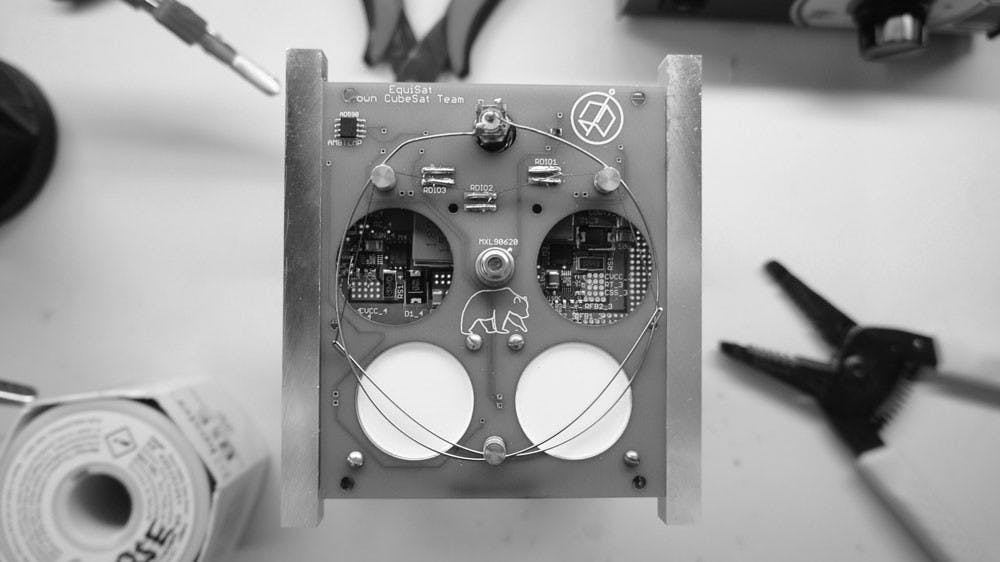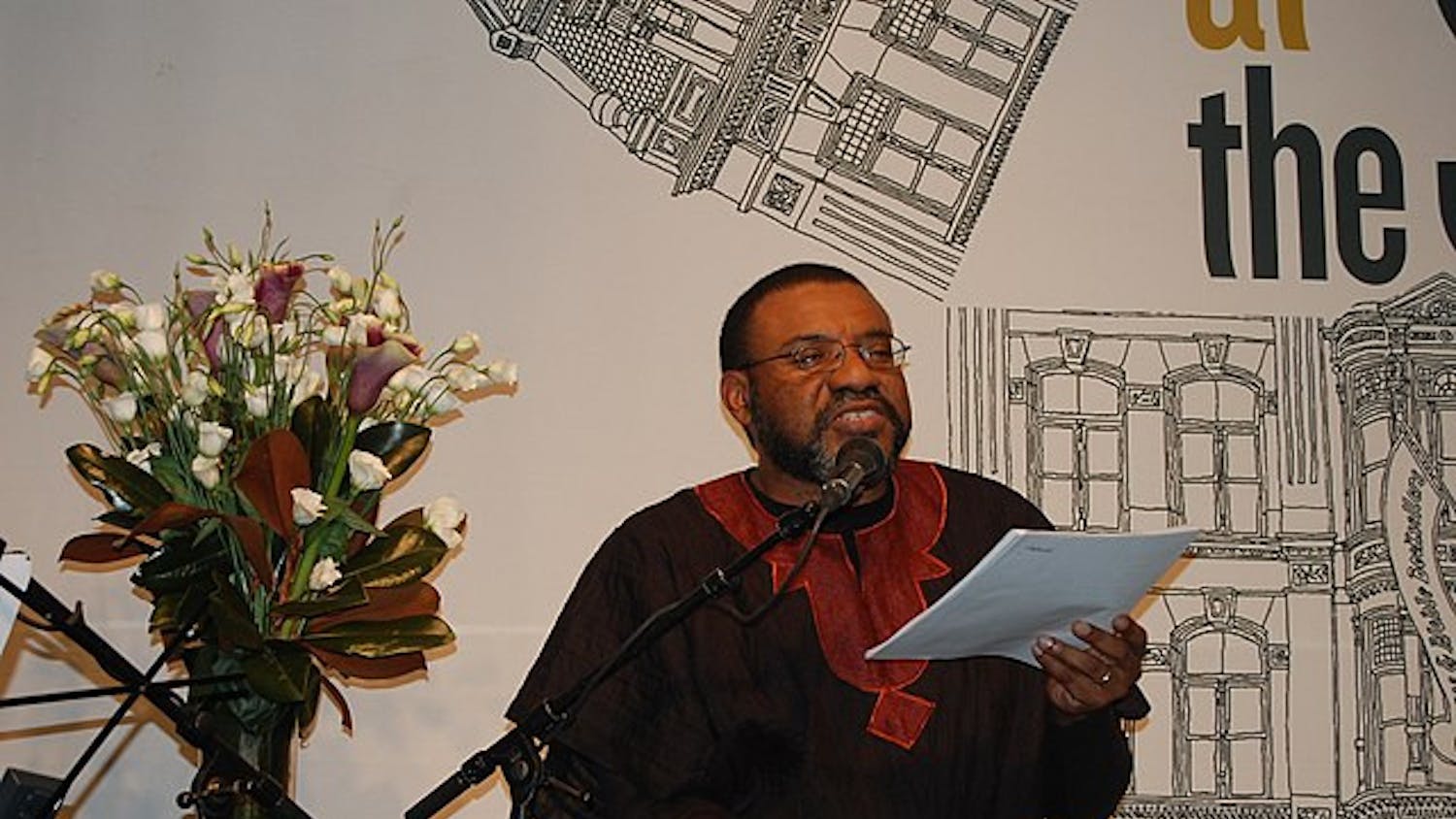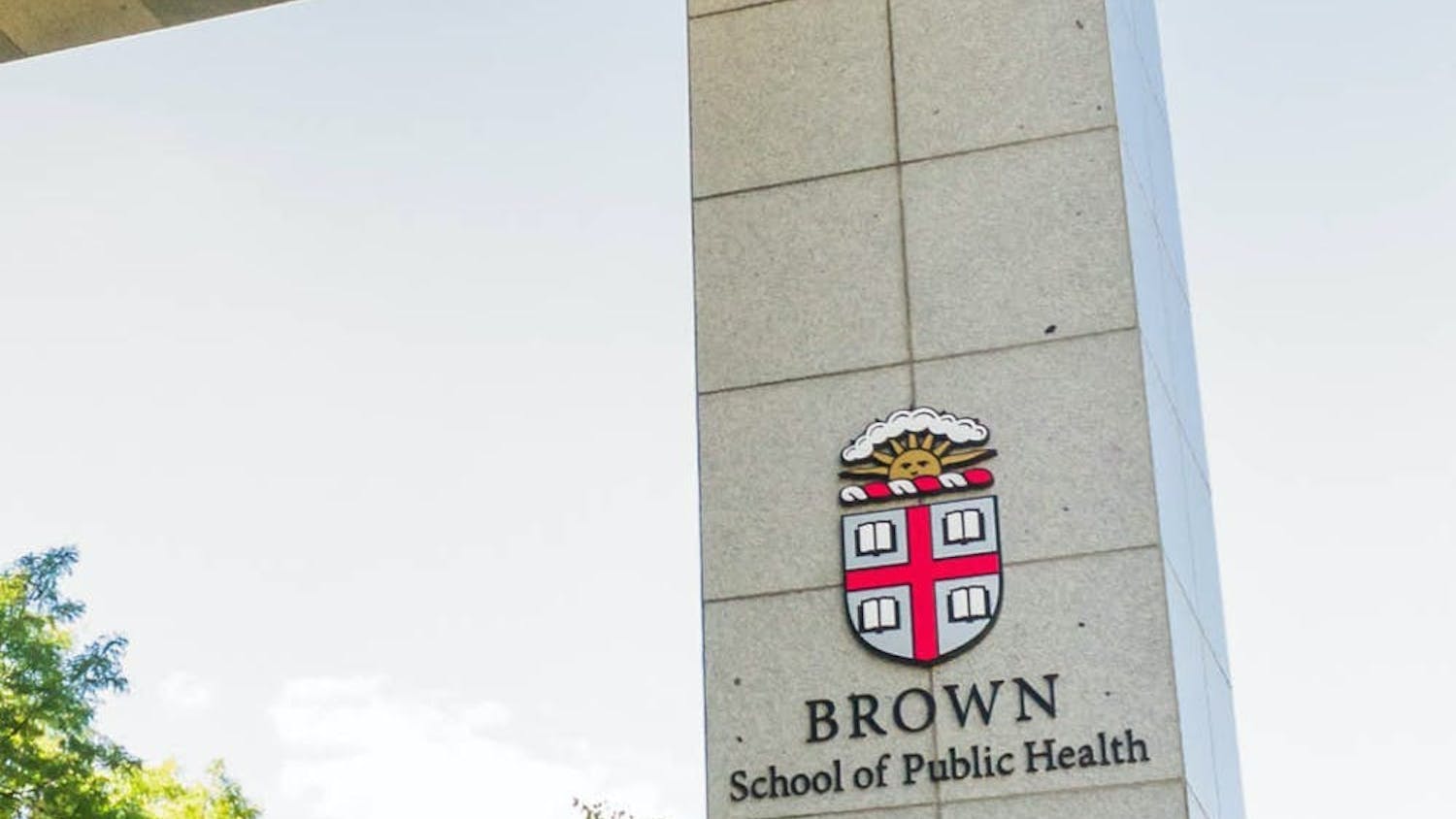Brown Space Engineering, an undergraduate student club, will launch its first satellite, EQUiSat, from the International Space Station Spring 2018.
A ten centimeter cube weighing 1.3 kilograms, the satellite gets its name from one of the project’s most important missions: equality. The team hopes to “bridge the gap between the space industry, which is now kind of exclusive to governments and large corporations with a lot of money, and … people who want to get involved with space but don’t have massive amounts of resources,” said Tyler Fox ’17, the team’s avionics software lead. “Our slogan is ‘space for the people.’”
The project began about six years ago in Professor of Engineering Richard Fleeter’s course ENGN 1760: “Design of Space Systems,” said Hunter Ray '18, the project manager. Students from the class formed a club after finding a plausible and cheap way to build a satellite, he added.
To work toward its mission, the team set up three ways for the general population to interact with the satellite. The primary means of interaction is by directly viewing EQUiSat. It will be flashing “four extremely bright LEDs from orbit,” said Ryan Izant ’17, the systems and avionics hardware lead. “(The satellite) will be in a 400 kilometer altitude orbit … anyone in the Northern Hemisphere will be able to see our satellite flashing with the naked eye.”
Secondly, the team implemented a radio for anyone to be able to track the satellite as it travels around the world. “We’re really pushing the outreach component,” Ray said. “As a club, we really want to show people how close space is … people see space as this vague thing ‘up there.’” By engineering a satellite that will be visible from the earth, the team hopes that “people will be able to see space in different ways,” Ray added.
The third means of interaction with the satellite is watching its progression and the data collected on the team’s website. The team is also open sourcing the satellite’s design, according to its website.
Aside from its outreach mission, the group has another important goal for the satellite: testing a new kind of battery that has never been used in space before. “NASA doesn’t want to test these batteries for the first time ever, so we’re kind of the guinea pigs,” Fox said. These lithium iron phosphate batteries have a lot of advantages, Izant said. “We can draw a lot of current from them, which is a very (necessary) technology.” Additionally, the batteries do not lose charge quickly and are less likely to explode, Ray and Fox said.
A big part of building the satellite was figuring out and establishing final goals, Izant said. “After that all gets formulated, (we could) start digging in from there and ask things like, ‘How are we actually going to make the electronics that power these LEDs?’ and, ‘How are we going to charge these batteries?’”
Though the majority of the work has already been completed, the team still needs to test and re-test the satellite before it is launched in 2018, said Kairy Herrera ’18, the team’s outreach lead. “In the time left, what we will be doing is testing all the different components to make sure that they work … We test things like flash to see how luminous it is and to make sure the flash panels have the right circuit,” she said. “When you’re dealing with such a small satellite that literally fits in the palm of your hand, you need to make sure every millimeter is functioning properly.”





